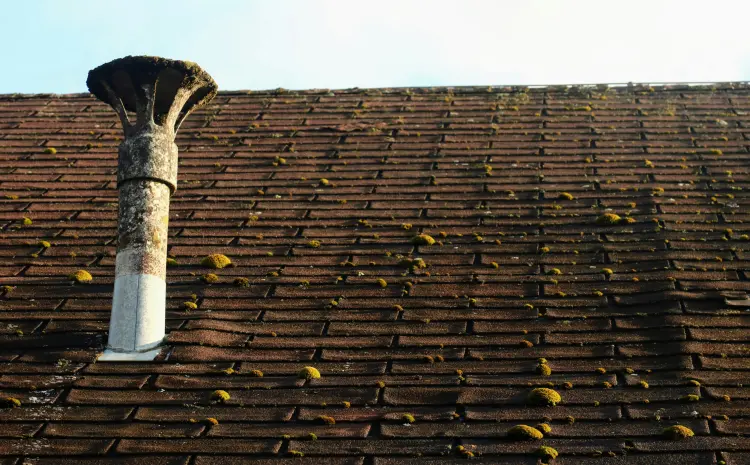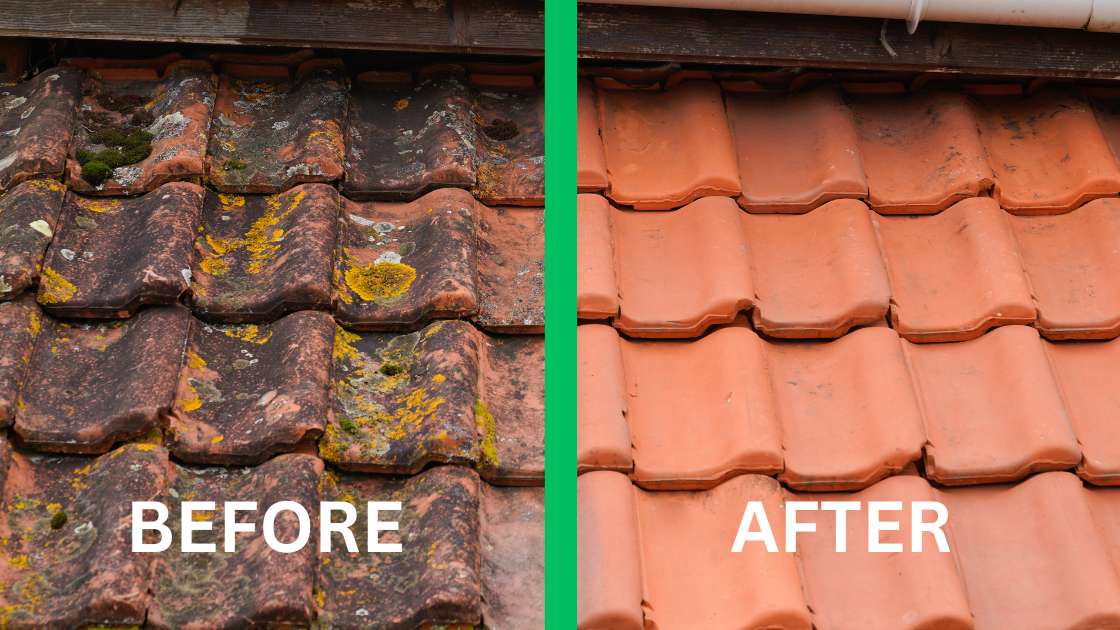Essential Tips for Successful Moss Removal to Improve Your Exterior Space
Moss can be a consistent problem in exterior areas, frequently growing in moist and shaded locations. Comprehending the underlying reasons for moss growth is vital for reliable removal and avoidance. Determining the right strategies and tools is essential for tackling this concern. Additionally, maintaining a healthy outdoor environment can significantly lower the chances of moss returning. Exploring effective strategies can change ignored locations into lively landscapes. What actions can one take to ensure long-term results?
Recognizing the Reasons For Moss Development
Although moss can add a picturesque quality to landscapes, its growth often suggests underlying issues in the environment. Typically, moss flourishes in wet, shaded locations where sunshine is restricted, creating an optimal environment for its spreading. Poor water drainage and compacted dirt contribute significantly to its spread, as these problems preserve dampness and hinder correct water runoff. Additionally, acidic soil can favor moss over even more preferable plants, causing imbalances in the ecological community. High moisture and consistent rains even more exacerbate the problem, allowing moss to thrive where other greenery battles. Absence of competitors from grass turfs can likewise help with moss growth, especially in overlooked areas. Overall, understanding the root causes of moss development is crucial for efficient monitoring and removal, making certain that outdoor areas can return to their designated visual and ecological function. Attending to these underlying issues is important to protect against future moss problems.
Identifying Locations Prone to Moss Accumulation
Identifying areas susceptible to moss build-up is vital to reliable monitoring and avoidance. Moss flourishes in settings that are damp, shaded, and have poor drain. Areas under trees or dense hedges commonly experience low sunshine, producing perfect problems for moss development. In addition, areas with compressed dirt, such as pathways or greatly trafficked yards, may preserve moisture, more promoting moss spreading.
Inadequately draining surface areas like concrete or asphalt can also end up being moss hotspots, specifically in shaded areas. Property owners need to on a regular basis inspect their outdoor rooms, seeking indicators of moss on roof coverings, patio areas, and yard beds. Determining these locations enables positive procedures to be taken, such as improving sunlight exposure, boosting water drainage, or readjusting landscaping. By acknowledging these vulnerable areas, individuals can much better plan for and stop future moss problems, ultimately bring about a much healthier and much more aesthetically pleasing exterior area.

Reliable Moss Removal Techniques
Removing moss efficiently requires a combination of techniques tailored to the specific surfaces and conditions where moss has actually taken hold. For tough surface areas such as driveways and patio areas, a stress washer can be very efficient, blowing up away moss without damaging the underlying product. When taking care of softer surface areas like roofing systems or wood decks, a gentler approach is necessary; utilizing a soft-bristle brush and a blend of vinegar and water can assist dislodge moss without causing injury.

Avoiding Future Moss Development
To stop future moss growth, it is necessary to improve sunlight exposure and improve drainage systems. Boosting sunshine can hinder moss from thriving in shaded areas, while efficient drainage decreases dampness accumulation. Executing these methods can produce a setting much less helpful to moss expansion.
Boost Sunlight Direct Exposure
Exactly how can raising sunshine exposure properly fight future moss development? By permitting extra sunshine to reach shaded locations, house owners can greatly hinder the perfect conditions that moss grows in. Moss generally flourishes in dark, wet settings; as a result, enhancing light availability can disrupt its life cycle. Strategic tree trimming or removal might be necessary to boost sunlight in influenced areas. Additionally, making use of reflective surface areas, such as light stones or patio area materials, can further boost light infiltration. Consistently keeping track of and keeping garden wellness also guarantees that sunlight can reach the ground successfully. Applying these measures not only minimizes the probability of moss regrowth however also advertises a healthier, extra vibrant outdoor space.

Improve Drainage Systems
Efficient water drainage systems play an important duty in avoiding future moss development in domestic landscapes. When water gathers in certain areas, it develops a wet environment for moss spreading. To enhance drain, property owners need to evaluate their landscape for low-lying locations and take into consideration setting up French swales or drains pipes to redirect excess water. Normal maintenance, such as clearing downspouts and rain gutters, will additionally advertise efficient water circulation. resource Additionally, ensuring that dirt is well-aerated can improve absorption and lower water merging. Planting drought-resistant plants can even more minimize moisture retention, developing a negative setting for moss. By resolving water drainage issues proactively, property owners can significantly decrease the possibility of moss taking hold and maintain a much healthier, more vibrant outdoor room.
Picking the Right Products for Moss Control
When picking products for moss control, property owners need to evaluate the advantages of all-natural versus chemical options. Each choice provides distinct advantages and possible downsides, affecting performance and ecological influence. Furthermore, recognizing numerous application approaches can assure perfect results in moss elimination efforts.
Natural vs. Chemical Solutions
While both natural and chemical services supply feasible options for moss control, the selection usually relies on individual choices, environmental factors to consider, and dig this the intensity of the moss problem. Natural remedies, such as vinegar, baking soft drink, or salt, are typically preferred for their eco-friendliness and low poisoning. They can efficiently inhibit moss development without damaging bordering plants or soil health. Alternatively, chemical services have a tendency to be much more powerful and can give quicker outcomes, making them suitable for extreme infestations. They might posture risks to non-target microorganisms and the environment if misused. Eventually, the decision between chemical and natural products ought to mirror an equilibrium of effectiveness, safety, and the general effect on the exterior space.
Application Techniques Clarified
Picking the best items for moss control entails understanding the various application techniques readily available. Homeowners can pick between granular, liquid, and foam products based on their preferences and the certain location impacted by moss. Granular solutions are typically spread over the moss-infested area, enabling for progressive absorption and efficiency. Fluid therapies, frequently applied with a sprayer, offer immediate protection and penetration, making them appropriate for bigger locations. Foam items give targeted application, which can be advantageous for elaborate surfaces like roof coverings or walls. Additionally, elements such as weather condition problems and surface type ought to be thought about when selecting a method. Ultimately, understanding these strategies makes it possible for effective moss control, ensuring a much healthier and a lot more attractive outdoor space.
Maintaining a Healthy Outdoor Room After Elimination
After moss removal, it is necessary to execute efficient maintenance methods to ensure the exterior room continues to be healthy and balanced and vivid. Normal yard care is essential; trimming at the suitable height promotes yard health and wellness and inhibits moss regrowth. Furthermore, guaranteeing adequate sunlight gets to the grass and yard areas is vital, as moss grows in shaded environments.
Soil health and wellness must likewise be focused on. Testing soil pH and nutrient degrees can direct suitable modifications, promoting a durable community. Correct drain is an additional crucial factor; resolving any merging water can prevent moss from restoring itself.

Often Asked Questions
Can Moss Be Beneficial for My Yard or Landscape?
Moss can be beneficial for gardens and landscapes by supplying ground cover, maintaining wetness, and boosting soil top quality. It also cultivates biodiversity, supplying habitat for tiny microorganisms and improving the general aesthetic appeal of outside areas.
Just how Lengthy Does It Take for Moss to Grow Back After Elimination?
Moss can grow back within a couple of weeks to numerous months after elimination, depending on environmental conditions like soil, shade, and dampness high quality. Routine maintenance is vital to avoid fast reestablishment in affected locations.
Is Moss Elimination Harmful to Surrounding Plants or Wildlife?
Moss elimination can possibly damage surrounding plants and wildlife, specifically if chemical treatments are used. Hand-operated removal, nevertheless, typically poses marginal danger, though treatment must be taken to prevent troubling nearby plant life and habitats throughout the process.
What Season Is Best for Moss Elimination?
The very best time for moss elimination is normally in early springtime or late fall. Throughout these periods, temperatures are modest, and wetness degrees can help promote the elimination process while decreasing tension on bordering plants.
Just How Can I Tell if Moss Is Dead or Just Dormant?
To identify if moss is inactive or dead, one should examine its color and structure. Healthy and balanced moss appears vivid and green, while dead moss has a tendency to be brownish and fragile, doing not have moisture and elasticity.
Normally, moss grows in wet, shaded areas where sunlight is limited, creating an ideal habitat for its expansion. Eliminating moss successfully calls for a mix of strategies customized to the certain surface areas and problems where moss has actually taken hold. Raising sunshine can hinder moss from growing in shaded locations, while reliable drain lessens wetness build-up. By enabling much more sunlight to reach shaded locations, property owners can significantly prevent the perfect problems that moss grows in. While both chemical and natural services use practical alternatives for moss control, the choice usually depends on specific preferences, environmental considerations, and the intensity of the moss problem.